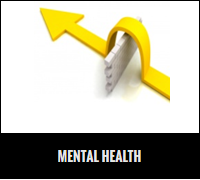The Theory of Self: Research
I believe that psychology need not go, as it does presently, in two different directions: 1) the study of pathology and 2) the study of well-being. I believe that the body and mind, both being machines, can and do break down, can produce variations that are beyond our control and even our imagination, and can lack certain hormones and other chemicals needed for health and well-being. But I believe that these cases are by far in the minority. As far as the causes of depression, anxiety, and other mental illnesses medical and psychology communities are attempting to cure, I believe that most of the pathologies are the result of the same dynamic that applies to a majority of individuals: a basic ignorance of who they are as human beings, how they function, their lack of awareness of what their needs truly are, their lack of vision and knowledge as to how to ask for what they want, and finally, how to be unconditionally loving toward themselves (self-sufficiency) and others, and how to ask for and receive unconditionally loving behavior.(7)
This can all be taught! It can happen once people understand that they have a self that needs development and rehabilitation.
I believe that both an individual life span and human evolution (at least from the Stone Age through today) have three-part developmental processes: the physical, the mental, and that of the self. The micro-evolutionary process (or human development and life span) mirrors the macro-evolutionary process of human evolution. Both theories are easy for people to follow and for me to provide evidence for. I will start with the theory of human evolution, because the historical documentation makes it relatively simple to prove.
The three stages of human evolution can be seen when we document the evolution of ideas relating to the body/me survival stage, the mind/we survival stage, and the self/us survival stage. It is this theory of human evolution that underscores my theory of life span.
Although I am not an archaeologist or anthropologist, records seem to indicate that the Paleolithic Age, or the Old Stone Age, covered about ninety-nine percent of human history. During this period, stone tools were developed. During the Paleolithic Age, humans grouped together in small scale societies and gathered plants and hunted wild animals. This ninety-nine percent of human history took more than two million years. Human beings lived in isolated bands with the average life expectancy of perhaps twenty years or less. The next stage in human evolution was called the Pleistocene, and it was characterized by the introduction of agriculture around the tenth millennium BCE.
When you consider that, for nearly two million years, human beings existed in a very primitive mode of survival, don’t you have to ask yourself the question, Why? I did!
We see how rapidly knowledge advances today. Then, why did it take nearly two million years for humanity to move from stone tools to metals, from exclusively hunting and gathering to also developing the knowledge of domesticating plants and animals when their very survival was at stake?
Anthropologists have theories about why this took so long to happen, and so do I. The following table can start to explain my theory.(8)
| Humans by Era and Region | Average Lifespan at Birth (years) | |
| Late Pleistocene (Neanderthals) | 20 | |
| Upper Paleolithic | 33 | |
| Neolithic | 20 | |
| Bronze Age | 18 | |
| Classical Greece | 20–30 | |
| Classical Rome | 20–30 | |
| Pre-Columbian North America | 25–35 | |
| Medieval Britain | 20–30 | |
| Early Twentieth Century | 30–40 | |
| Current world average | 78 |








